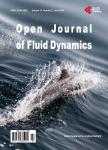Soil Nature Effect Investigation on the Ground-to-Air Heat Exchanger for the Passive Cooling of Rooms
Soil Nature Effect Investigation on the Ground-to-Air Heat Exchanger for the Passive Cooling of Rooms作者机构:Department of Physics Solar Energy Laboratory University of Lome Lome Togo Department of Physics Laboratory of Mathematics and Physics University of Perpignan Perpignan France
出 版 物:《Open Journal of Fluid Dynamics》 (流体动力学(英文))
年 卷 期:2022年第12卷第4期
页 面:321-341页
学科分类:07[理学] 0701[理学-数学] 070101[理学-基础数学]
主 题:Soil Temperature Laminar Regime Ground-To-Air Heat Exchanger Heat Transfer Geothermal System
摘 要:The building sector consumes much energy either for cooling or heating and is associated to greenhouse gas emissions. To meet energy and environmental challenges, the use of ground-to-air heat exchangers for preheating and cooling buildings has recently received considerable attention. They provide substantial energy savings and contribute to the improvement of thermal comfort in buildings. For these systems, the ground temperature plays the main role. The present work aims to investigate numerically the influence of the nature of soil on the thermal behavior of the ground-to-air heat exchanger used for building passive cooling. We have taken into account in this work the influence of the soil nature by considering three types of dry soil: clay soil, sandy-clay soil and sandy soil. The mixed convection equations governing the heat transfers in the earth-to-air heat exchanger have been presented and discretized using the finite difference method with an Alternate Direction Implicit (ADI) scheme. The resulting algebraic equations are then solved using the algorithm of Thomas combined with an iterative Gauss-Seidel procedure. The results show that the flow is dominated by forced convection. The examination of the sensitivity of the model to the type of soil shows that the distributions of contours of streamlines, isotherms, isovalues of moisture are less affected by the variations of the nature of soil through the variation of the diffusivity of the soil. However, it is observed that the temperature values obtained for the clay soil are higher while the sandy soil shows lower temperature values. The values of the ground-to-air heat exchanger efficiency are only slightly influenced by the nature of the soil. Nevertheless, we note a slightly better efficiency for the sandy soil than for the sandy-clayey silt and clayey soils. This result shows that a sandy soil would be more suitable for geothermal system installations.



